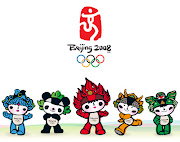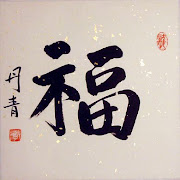
The Yin or Yang is broken down into Five Elements (Wood, Fire, Earth, Metal, and Water) on top of the cycle of animals. These are modifiers and affect the characteristics of each of the 12 animal signs. Thus, each of the 12 animals are governed by an element plus a Yin Yang Direction.
Although it is usually translated as 'element' the Chinese word xing literally means something like 'changing states of being', 'permutations' or 'metamorphoses of being'. [1] In fact Sinologists cannot agree on one single translation. The Chinese conception of 'element' is therefore quite different to the Western one. The Western elements were seen as the basic building blocks of matter. The Chinese 'elements', by contrast, were seen as ever changing and moving forces or energies - one translation of xing is simply 'the five changes'.
The balance of yin and yang and the five elements in a person's make-up has a major bearing on what is beneficial and effective for them in terms of feng shui, the Chinese form of geomancy. This is because each element is linked to a particular direction and season, and their different kinds of qì or life force.
木 Wood
- The East
- Spring
- Azure Dragon
- The Planet Jupiter
- The Color Green
- Liver and gallbladder
- Generous, Warm, Persuasive, Co-operative, Seeks to Expand and Grow
- Idealistic, Ethical, Enthusiastic, Seeks to Explore
Wood 'Governs' the Tiger, Rabbit, Dragon
火 Fire
- The South
- Summer
- Vermilion Bird
- The Planet Mars
- The Color Red
- Circulatory system & Heart
- Dynamic, Humanitarian, Energetic, Passionate, Enterprising, Adventurous, Restless
- Competitive, Leadership Skills, Strong, Single-minded, Loves a good laugh
Fire 'Governs' the Snake, Horse and Sheep
土 Earth
- Center
- Three Enclosures, Change of seasons
- The Yellow Dragon
- The Planet Saturn
- The Color Yellow
- Digestive system, Spleen and stomach
- Patient, Militaristic, Prudent, Stable, Reliable, Hard-working, Ambitious, Stubborn, and very energetic
- Disciplined, Tenacious, Logical, Governed by Service and Duty to Others
'Governs' Dragon, Rat, and Ox. It is the central balance of the elements and can lend qualities to all 12 animals as well.
金 Metal
- The West
- Autumn
- White Tiger
- The Planet Venus
- The Color White
- Respiratory system & Lungs
- Determined, Self-reliant, Unyielding, Strong, Tenacious, Forceful
- Reserved, Needs Personal Space, Sophisticated, Seeks pleasure, caring, respectful
Metal 'Governs' the Monkey, Rooster, Dog
水 Water
- The North
- Winter
- Black Tortoise
- The Planet Mercury
- The Color Black
- Skeletal/Excretory System & Lungs
- Secretive, Charming, Intuitive, Compassionate, Sensitive, Creative
- Flexible, Compliant, Eloquence, Intellectual
Water 'Governs' the Pig, Rat, Ox



